Flowing across Virginia, the James River is a popular destination for outdoor enthusiasts and history buffs. Spanning approximately 340 miles, the river has a rich historical background, playing a crucial role during the colonial era and the Civil War.
Home to diverse wildlife and awe-inspiring scenery, the James River is the perfect location for those wishing to discover Virginia’s stunning natural wonders. So in this article and guide, let’s explore every little detail of the largest river in Virginia.
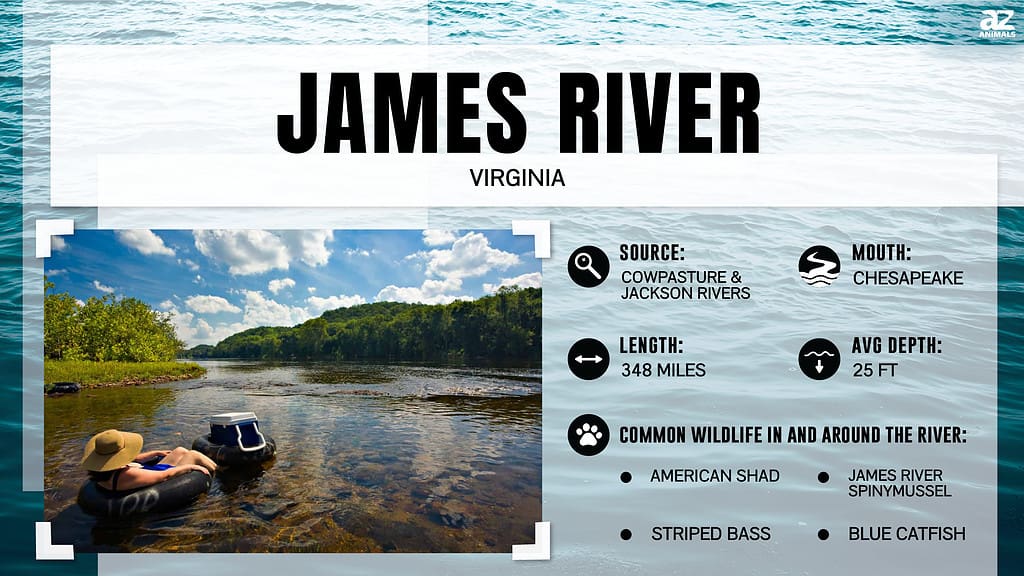
History
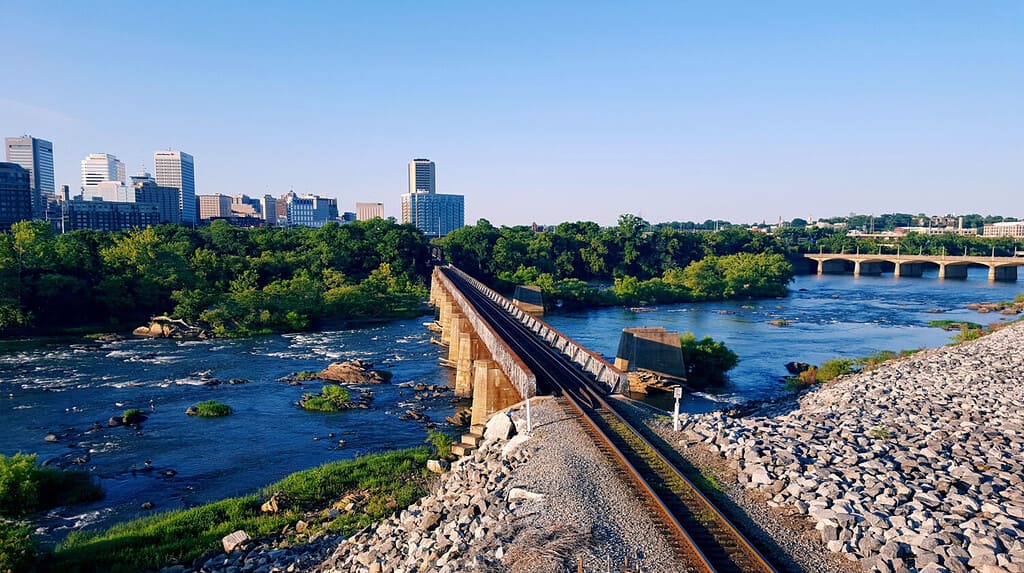
Beyond being a simple river, the James River carries great significance in American history, shaping the nation into what it is today.
©casualskydiving/Shutterstock.com
Beyond being a simple river, the James River carries great significance in American history, shaping the nation into what it is today.
Being the site of Virginia’s first colonial capital in Williamsburg and the first English settlement in 1607, this river is often referred to as America’s “founding river.” But, long before colonization, indigenous people used it as a vital transportation corridor for over 16,000 years.
The river’s importance to early Virginia commerce and settlement cannot be overstated. Despite initial growth primarily concentrated in the Tidewater region, navigation of the James River was critical to the colony’s expansion. As early as the late 17th century, fur-trading parties sent out by Abraham Wood were exploring the upper reaches of the river.
The James River has also witnessed some of the most critical battles fought during the Revolutionary and Civil Wars. During the Civil War, this river’s eastward flow, shared by other major rivers in central Virginia, created a natural obstacle to the advancement of Union land forces toward the South.
When it comes to American history, few rivers are as rich as the James River.
Size
The James River, a prominent waterway in Virginia, spans 348 miles exclusively within the state’s boundaries. This characteristic makes it one of the longest rivers in the United States.
If we include the Jackson River, which is the length of its two headwaters, the James River’s length increases to an impressive 444 miles. It’s the largest river in Virginia and as wide as 5 miles at certain points in the Hampton Roads area.
The James River is huge, covering over 10,000 square miles and going through 19 cities and 39 counties in Virginia. This accounts for almost 25% of the state’s total land area. Approximately one in three Virginians reside within the James River watershed and depend on it for various essential functions like potable water, recreational activities, and trade.
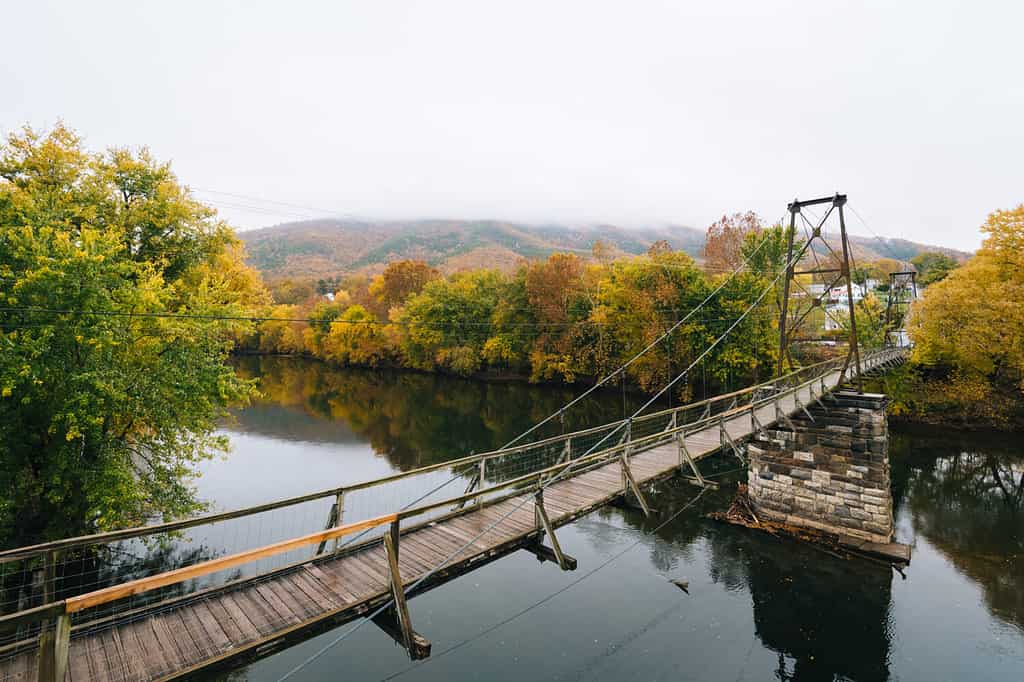
The river’s importance to early Virginia commerce and settlement cannot be overstated.
©Jon Bilous/Shutterstock.com
Depth
The depth of James River is not constant and can vary significantly due to factors such as location, time of year, and weather conditions. Despite this variability, one thing is for sure: the river is deep enough to accommodate large vessels.
For instance, at the Richmond Deepwater Terminal, the James River provides a depth of 25 feet, which makes it an ideal spot for ships to dock and unload their cargo safely.
Source
The James River originates in the mountains where the Jackson and Cowpasture Rivers meet in Botetourt County. Flowing through Virginia, it eventually reaches its destination at the Chesapeake Bay in Hampton Roads.
The James River is crucial in Virginia’s ecosystem, as it is the largest tributary to the Chesapeake Bay.
Geology
The James River basin is home to an array of rock formations that give us a peek into the area’s geological history.
Nestled in the Blue Ridge Mountains, the James River begins its journey as a collection of babbling streams and creeks. The mountains are mainly comprised of ancient crystalline rocks, including gneiss, schist, and granite which were shaped over a billion years ago due to extreme heat and pressure.
As the James River journeys eastward, it navigates the Piedmont region, distinguished by a mix of metamorphic, sedimentary rocks, and igneous. In this area, one can encounter diabase, basalt, and granite alongside shale, limestone, and sandstone.
Ultimately, the James River arrives at the Coastal Plain, meandering through flatlands composed of clay, gravel, and sand. This part of the basin also features swamps and marshlands, which serve as crucial habitats supporting a wide range of wildlife species.

The James River basin is home to an array of rock formations that give us a peek into the area’s geological history.
©Tracey Mershon/Shutterstock.com
Fish
Whether you are a beginner or an expert, James River is the place to be if you love fishing.
To access the river, kayaking and canoeing are highly recommended, as you can easily navigate to the prime fishing locations. Alternatively, small boats, especially jon boats with jet drive motors, can be used at most access points. Wade and bank fishing access are also available throughout the river. It is important to note that a freshwater fishing license is required for all fishermen aged 16 and older.
Smallmouth Bass
Smallmouth bass is the most prevalent game species in the James River, with exceptional fishing opportunities available throughout the river. Other species, including spotted and largemouth bass, channel and flathead catfish, muskies, and sunfish species such as redbreast, bluegill, and rock bass, can also be caught in the river.
Muskie
Muskie fishing is generally best upstream from Lynchburg, while channel catfish are more commonly found below Lynchburg. The tidal James River system is nationally recognized for its largemouth bass and trophy blue catfish fisheries. There are numerous well-known fishing sites. Look out for Herring Creek, Powell Creek, Gray’s Creek, and Dutch Gap barge pit, providing exceptional fishing experiences.
Striped Bass
Finally, striped bass fishing is also ideal in the tidal James River. The exciting action is provided near the fall line during the spring season. The best fishing is generally found downstream of the I-295 Bridge during the fall season.
Stripers can also be found in the larger tidal tributaries downstream of the Appomattox River. The best fishing occurs below the freshwater-saltwater license line late in the fall season near the “mothball fleet,” Monitor-Merrimac Bridge-Tunnel, and James River Bridge.
Overall, the James River offers a wide range of fishing opportunities for all anglers. There are various species available and numerous fishing locations accessible through various means.
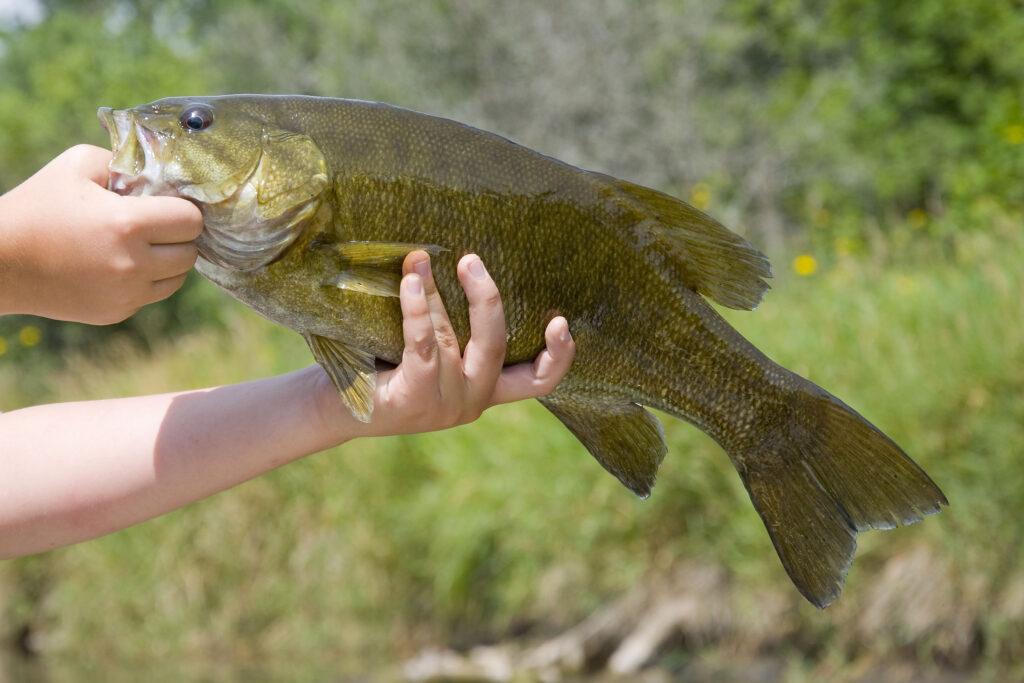
Smallmouth bass is the most prevalent game species in the James River, with exceptional fishing opportunities available throughout the river.
©Steve Oehlenschlager/Shutterstock.com
Activities
The James River boasts a plethora of activities worth mentioning, some of which are highlighted below.
Camping
Embark on an unforgettable outdoor adventure by camping along the James River and its tributaries during the warmer seasons. You can enjoy the thrill of camping under the stars and the relaxing sounds of the river.
If you’re seeking an escape to nature, James River State Park is the perfect destination. This park is situated in the foothills of the Blue Ridge Mountains. It provides breathtaking scenery and serene forests for you to discover.
James River State Park offers an array of camping options. You can set up a tent along the river’s historic banks or close to Branch Pond. James River State Park offers numerous facilities, including a playground inspired by nature, a visitor center, cabins, a gift shop, picnic shelters, boat launches, versatile trails, and even facilities for equestrians camping.
Don’t forget to keep your eyes peeled for the diverse wildlife that calls the James River home. From great blue herons to bald eagles, you never know what you might spot while exploring the area around the James River.
Hiking
James River offers a diverse selection of trails for outdoor enthusiasts, with options ranging from strolls to more challenging hikes.
If you are short of time, the Belle Isle Trail, which is a loop of 1.1 miles, usually takes approximately 25 minutes to finish. This popular trail attracts hikers, mountain bikers, and runners, so be prepared to encounter others enjoying the picturesque surroundings. Feel free to bring your leashed canine along for the adventure.
If you’re looking for a hike that is a bit longer, the Floodwall and Slave Trail could be an option for you. You can complete this 4.4-mile out-and-back trail in 1 hour and 30 minutes. This moderately difficult trail is perfect for birdwatching, hiking, and running. It offers peaceful moments, particularly during less busy times of the day.
For a more demanding hike, consider tackling the Buttermilk Trail. Spanning 4.5 miles, this trail ranks first among moderate hikes in James River Park. It takes an estimated 1 hour and 40 minutes to finish. As this is a multi-use trail, be mindful of your surroundings since hikers and bikers share the path.
Regardless of the trail you choose, hiking at James River provides an opportunity to appreciate Virginia’s natural beauty while engaging in physical activity.
Boating
With a marina located at Rockett’s Landing and multiple boat launches, you can easily put in your boat or rent one for a quick and hassle-free start to your adventure on the water.
Once you are out on the river, you will be greeted with relatively flat water and ample width. Conditions are perfect for waterskiing and wakeboarding. If you’re feeling adventurous, you can even plan a trip to Virginia Beach, Jamestown, or anywhere along the East Coast.
For those who love to combine history with fun, the Riverfront Canal Cruises in Richmond offer a unique opportunity to delve into George Washington’s vision for a turnpike system and a canal. The 40-minute tour takes riders back in time. It showcases a fascinating slice of history starting from Washington’s lobbying of the General Assembly in 1789.
Paddle sports enthusiasts will also find plenty to love on the James River.
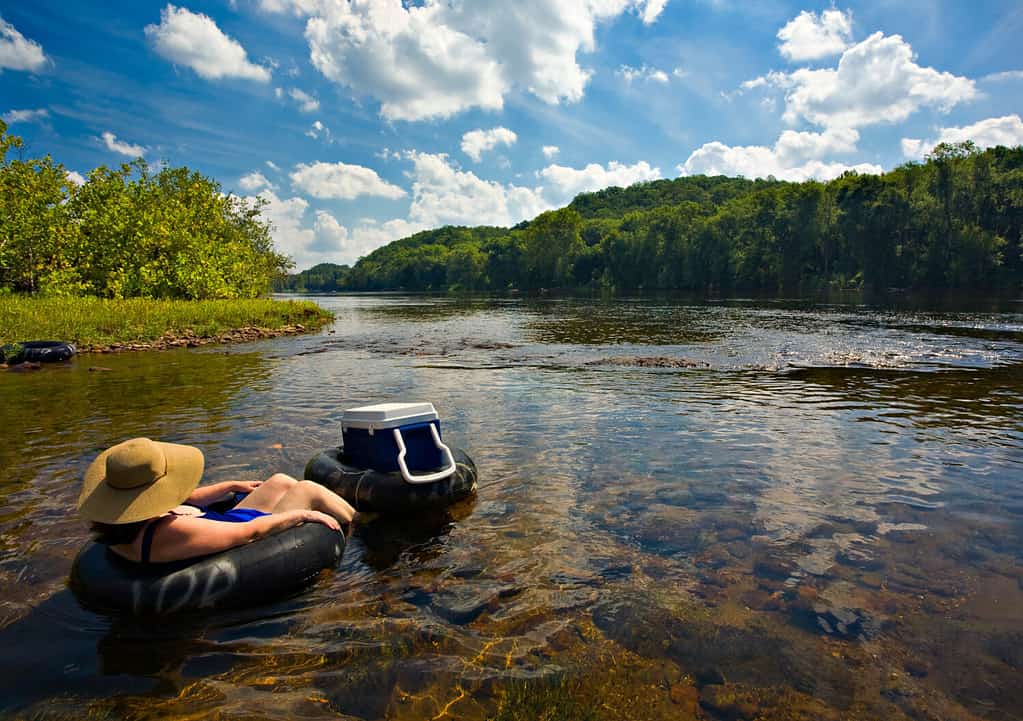
Paddle sports enthusiasts will also find plenty to love on the James River.
©jack looney photography/Shutterstock.com
The photo featured at the top of this post is © Xavier Ascanio/Shutterstock.com
Thank you for reading! Have some feedback for us? Contact the AZ Animals editorial team.






